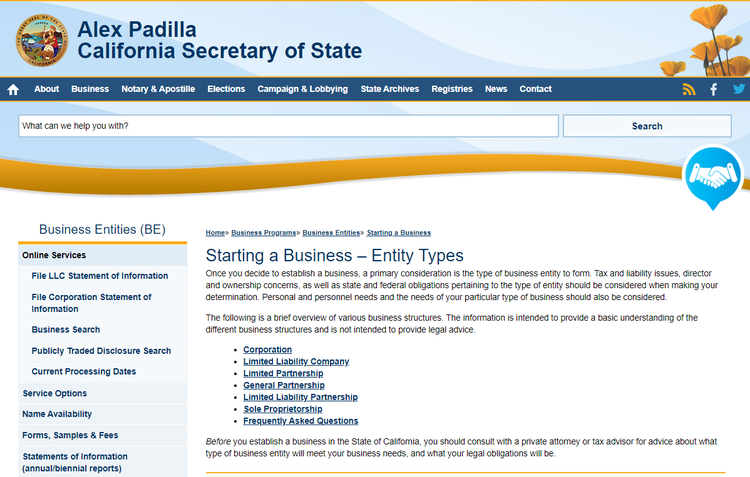22 Side Business That Can Make You Richer Than A Job


Earning extra money on the side can be easy when you know what types of Business opportunities to look for. Whether you want to pay off student loan debt, start saving for a big-ticket purchase or build up a fund for the future, finding one of the best side jobs out there is a great way to reach your goal. “Business intelligence analyst”
Some side jobs pay so well that you might even consider giving up your full-time job to have more time to dedicate to these Business. It’s important to note that some of these jobs might be harder to do during the pandemic but could be ones you look to take on in the future.
Great Businesses You Can Start While Keeping Your Day Job
If you need a side job to create extra income, read this list of viable side jobs to create your own schedule and breaking out of the 9-to-5 grind.
Lawn Care
Professional Sign up as a vendor with Green Pal, a lawn care service and app that CEO Bryan Clayton describes as “Uber for lawn care,” and make money mowing lawns. “Many of our lawn care vendors are part-timers — some are firemen, some are teachers that use our app in the summer to make extra money; others are college students that work afternoons and weekends, and it is the perfect way for them to make extra money,” Clayton said. “Our average vendor makes around $55 per hour mowing lawns on our system.”
Task Rabbit
Become a Task Rabbit and earn money by completing everyday errands and tasks for people in your area. where you can select tasks you are willing to accomplish. After getting matched with individuals requesting service, you can proceed to doing the job — and getting paid.
When you pick a task, the website will show you hourly rates for the most qualified taskers. You will then be able to set your own price. All jobs require a minimum time commitment of one hour, and payments are made securely online. According to Time’s profile of elite taskers, Task Rabbits have been paid up to $70 an hour to fold shirts, $65 an hour for heavy lifting and $80 for moving services.
Frequent Flyer Specialist
The side business of frequent flyer specialist is perfect for those who travel often and understand how to maximize frequent flyer miles to receive the best deals. If this sounds like you, consider using your skills to help other travelers plan their itineraries. Experienced frequent flyer specialists can charge clients up to $150 for planning just one itinerary, according to a profile of a frequent flyer specialist on Budgets Are Sexy.
Bookkeeper
With this side gig — which typically pays $30 an hour, according to FlexJobs — your duties can include performing bank reconciliations, payroll needs and creating financial reports. Providing bookkeeping services to more than one company at once can increase your earning potential.
City Guide Writer
If you love your city and have a passion for writing, a side gig as a city guide writer might be ideal. According to Business Insider, real estate and tourism businesses often hire local writers to craft city and neighborhood guides. As a city guide writer, you would provide a unique local perspective on the city, statistics about population demographics and insider tips for shopping, recreation, culture, entertainment, activities, public transportation and more.
Online Instructor
Share your knowledge with the world — remotely and on your own schedule — by becoming an online instructor. Computer and IT skills courses are especially in demand, Dropshipping Business is very easy online earn money platform
Fashion Consultant
Fashionistas with an eye for current trends might be able to find side jobs as fashion consultants for high-end shoppers. Some clients are willing to pay top dollar for fashion help and will even ask their personal shoppers to select entire wardrobes for different seasons.
As a fashion consultant, you’ll meet with clients to discover their likes, dislikes, personalities and style goals. According to The Art Career Project, savvy stylers can earn anywhere from $50 to $500 per hour for their work.
Sign Language Interpreter Licensed
Sign language interpreters are hired by Businesses and other entities to facilitate communication for those who are deaf or hard of hearing. The average pay is $30 an hour, according to FlexJobs.
Curriculum Writer
If you’re a teacher looking to start a side gig outside of the classroom, consider becoming a curriculum writer. These professionals are hired to develop curricula and teaching guides. It’s a gig that can pay $50 per hour, according to FlexJobs.
Education Training Specialist
This gig involves conducting or teaching workshops, seminars or courses, as well as evaluating participants and developing the curricula for what you teach. According to FlexJobs, the average pay is $34 an hour.
Executive Assistant
It’s possible to find executive assistant positions that are remote and part time if you already have a few years of experience under your belt, according to FlexJobs. Duties can include setting up meetings, responding to emails, tracking appointments and more.
Consultant
Turn your area of expertise into extra money in your pocket with consultant work. These professionals are hired by an organization to review its processes and provide advice to improve its performance. According to FlexJobs, IT is a particularly lucrative field for consultants.
Lead Generation Specialist
Companies and business development teams hire these specialists to find, qualify and generate leads. It’s a gig that pays an average of $30 an hour, according to FlexJobs.
Project Manager
You don’t need a full-time job to put project management skills to use. Seek out freelance positions that take advantage of these skills, such as overseeing timelines, tracking budgets and coordinating team members. You can make $65 an hour without going into an office every day, according to FlexJobs.
Senior Accountant
Taking accounting gigs can become a major moneymaker. This job will require preparing statements and audits, documenting transactions and performing end-of-month tasks.
To earn the high salary of a senior accountant, you typically need five years of experience, according to FlexJobs.
Social Media Marketing
Social media has become a powerful selling tool for businesses and brands, and these companies depend on marketing specialists to make sure their social media campaigns are successful. These individuals create campaigns, develop strategies and write social media content.
Software Developer
These developers are responsible for maintaining and updating apps, testing automation design and troubleshooting software issues. This tech side gig pays an average of $55 an hour, according to FlexJobs.
Web Designer
An eye for design and a background in tech come together with this gig. Web designers will generally need knowledge of platforms such as CSS, WordPress or jQuery.
WordPress Developer
Many individuals and businesses use WordPress for their websites, so having a mastery of the platform can make for a high-paying side job. These developers create and edit themes, set up and utilize plugins, and write code. The average pay is $45 an hour.
Disc Jockey
Between corporate events, birthday parties and weddings, it’s possible to find enough side gigs as a DJ to make a good living. Although the average salary is $42 an hour, the top 10% of DJs bring in $123 an hour, according to Pay Scale.
Online Reseller
Having an eye for a bargain can make you rich as a reseller. Whether your passion is clothes, shoes or something more obscure, selling items for more than what you paid for them on eBay, Craigslist or apps like Poshmark can be a lucrative side gig.
Alexandra Marquez, a thrift store pro who resells the items she finds on Posh mark, told Business Insider that she left her $50,000-a-year corporate job at a marketing company to focus on her reselling business full time. She now makes $5,000 a month.
10 Types of Business Ownership and Classifications


This article highlights some of the benefits and limitations of the most common types of business structures to help you weigh your options and make an informed choice.When you’re looking to launch a new venture or take your existing small business to a higher level, it’s important to choose an ownership structure that can support your goals. The main considerations when choosing a structure for your business are simplicity, liability, control, financing, and taxes.
Here are the 10 types of business ownership and classifications:
- Sole proprietorship
- Partnership
- LLP
- LLC
- Series LLC
- C corporation
- S corporation
- Nonprofit corporation
- Benefit corporation
- L3C
Common types of business ownership The most common forms of business ownership are sole proprietorship, partnership, limited liability partnership, limited liability company (LLC), series LLC, and corporations, which can be taxed as C corporations or S corporations.
In addition, social entrepreneurs can choose from nonprofit corporations as well as benefit corporations and low-profit limited liability companies (L3Cs). States provide different business structures with unique requirements and privileges.
Some states, for example, provide special structures for professional firms such as professional LLCs (PLLCs) and professional corporations (PCs). Before making any decisions about your business structure, you’ll want to investigate the specific laws of your state.
It’s possible to form your business in a state other than your home state where the laws and small business taxes are more advantageous. This is not a simple decision, however, so you would want to do your research and talk to legal and financial advisors before making that call.
1. Sole Proprietorship
Sole proprietorship is the default structure of a business that hasn’t filed any paperwork to create a legal entity. It is the simplest form of business ownership, and the structure of choice for four out of five small business owners with no employees.
Advantages of a sole proprietorship Sole proprietorship is a simple ownership type with several advantages, including the following:
- Simplicity: In most cases, sole proprietors operating under their own names can simply get to work without filing paperwork with the state. Sole proprietorships may be exempt from certain licensing and registration requirements such as obtaining a business license to sell online. This makes sole proprietorship the simplest and least expensive among the different types of business ownership.
- Control over the business: A sole proprietorship is owned by a single person. There’s no need to get consensus before making decisions about the business: It’s all yours.
- Pass-through taxation: Profits from a sole proprietorship pass through to the owner’s personal income, simplifying taxes significantly. As a pass-through entity, a sole proprietorship qualifies for the 20% qualified business income (QBI) deduction established under the 2017 Tax Cuts and Jobs Act. Tax software can help you ensure that you’re getting all of the tax credits and deductions your business qualifies for.
Disadvantages of a sole proprietorship Sole proprietorships do have their disadvantages compared to other types of ownership.
- Legal liability: A sole proprietorship passes more than income through to its owner. Legally, the two are inseparable. That means any lawsuits or other claims against the business are launched personally against the owner. As a sole proprietor, you’re putting your personal assets on the line every day that you operate your business.
- Financial risk: In addition to legal risks, sole proprietors take on all financial risk of the business personally. Your home, bank accounts, cars, and other assets can be seized to satisfy claims by creditors if your business hits a rough patch financially.
- Access to funding: Because of their informal structures, sole proprietorships generally have a harder time accessing loans and investment capital than other business ownership types. This can make it difficult to provide competitive benefits such as small business health insurance.
2. Partnerships
Partnerships, often called general partnerships, are businesses with more than one owner. If you team up on a business venture without forming a legal business entity through the state, your business is a partnership by default.
While they don’t require formation paperwork, there may be limitations on naming a partnership in your state, which may necessitate filing a “doing business as” (DBA) name. Partnerships are usually founded on formal partnership agreements outlining the ownership share, rights, and obligations of each partner.
Partnerships are a popular type of company ownership for professional firms.
Advantages of a partnership Partnerships provide some notable advantages, including:
- Simplicity: Partnership is a relatively simple structure since it doesn’t require formation paperwork. Depending on the number of partners and the terms of your agreement, they can also be relatively simple to run.
- Pass-through taxation: Partnerships are pass-through entities, with income passing through to partners proportionally based on share of ownership. If your partnership is split evenly down the middle, for example, 50% of the business’s profits would pass through to each partner’s personal income. Partnerships qualify for the 20% QBI deduction.
- Control over the business: Partnerships allow their owners to participate in the business directly and allocate profits and control according to their own wishes. New partners can be brought in relatively easily.
Disadvantages of a partnership Following are some drawbacks of partnerships:
- Legal liability: Like sole proprietorships, partnerships open the partners up to legal liability for the firm’s operations. Liability insurance can address these risks, but insurance has limits.
- Financial risk: Partners also take on financial liability for the business, putting their personal assets at risk in case of financial hardship or bankruptcy.
3. Limited Liability Partnership (LLP)
An LLP is a legal entity available in some states to provide the simplicity and pass-through taxation of a partnership while limiting liability for the partners. In addition to a formal operating agreement among partners, LLPs generally require registration with the secretary of state.
Where available, they are a popular type of business entity with professionals such as doctors, lawyers, accountants, architects, and engineers.
Advantages of an LLPLLPs provide their owners with many advantages, including:
- Limited liability: Like an LLC, an LLP is a separate legal entity with its own assets and obligations. This protects partners from personal liability for legal and financial claims against the firm, although the degree of protection varies by state. Generally, the partners’ liability is limited to their investments in the firm. Partners may still be liable for their own personal errors and misconduct, so liability insurance is generally still required.
- Ownership and control: Like partnerships, LLPs allow owners to actively participate in the business and control how it is run.
- Tax options: LLPs may be considered pass-through entities, which can be advantageous for owners, particularly with the 20% QBI deduction. Their tax treatment varies by state, however.
Disadvantages of an LLPSome limitations of LLPs include:
- Limited availability: LLPs are not available in every state, and they may only be available to certain types of businesses.
- Increased complexity: Because LLPs are treated differently in different states, partners will need to research their state requirements and tax laws thoroughly before choosing this structure.


You can explore business ownership types and requirements in any state by visiting the secretary of state website. Image source: Author
4. Limited Liability Company (LLC)
An LLC is a legal entity formed by creating an LLC operating agreement and filing articles of organization with the secretary of state. LLCs allow business owners to retain some of the advantages of sole proprietorship while limiting legal and financial liability, making them a popular business ownership structure for small businesses.
When evaluating the advantages of sole proprietorship vs LLC, be sure to weigh all the pluses and minuses.
Advantages of an LLCLimited liability is one of several benefits provided by an LLC:
- Limited liability: When you form an LLC, you create a separate legal entity with its own assets and obligations. Any legal claims against the business remain against the business, not its owners. Members of an LLC may still be liable for their personal conduct, however, so liability insurance is generally advised.
- Active ownership: LLCs allow ownership by two or more members who can exert as much control and involvement in the business as they like.
- Tax options: LLCs are pass-through entities, which can be advantageous for owners, particularly with the 20% QBI deduction. But LLCs also provide additional flexibility by allowing members to choose to be taxed as a corporation instead (see “corporations,” below). This is generally advantageous to larger firms, but it gives LLCs flexibility as the business grows.
Disadvantages of an LLCFollowing are some of the limitations of LLCs:
- Complexity: LLCs must be formed by filing articles of formation with the state. You also have ongoing regulatory paperwork to attend to, including maintaining a registered agent to receive legal documents and filing periodic reports where required with the state. All of this adds up to extra administrative time and complexity.
- Administrative costs: An LLC costs more to create and maintain than a sole proprietorship. State filings generally require fees, and you may need software or support to complete them. You may need extra legal and financial guidance to ensure that you’re getting the most out of your choices as well, which can further add to the costs.
5. Series LLC
Currently available in 18 states and counting, series LLCs are an up-and-coming type of business ownership structure. Basically, they allow one parent LLC to form multiple internal LLCs in subsidiary fashion. These nested LLCs can be used to isolate liability for different business units.
Series LLCs are complex, but worth discussing with your advisors if your business has distinct units that might benefit from individual treatment.
Advantages of a series LLCSeries LLCs provide numerous benefits, including:
- Really limited liability: Each LLC within a series has separate members, assets, and liabilities.
- Active ownership: Series LLCs allow owners to actively participate in the operation of their individual LLCs.
- Tax options: Series LLCs retain the tax advantages and flexibility of traditional LLCs.
- Unified filing: Despite the multiple LLCs, a series LLC is required to register and file taxes just once through the parent LLC. The registrations and returns must encompass all LLCs, however, so they are still more complicated than a single LLC.
Disadvantages of a series LLCSeries LLCs have the following limitations:
- Complexity: Despite the unified filing setup, it’s considerably more complex to manage multiple LLCs with separate assets and owners than a single entity. Taxes in particular are complicated by the series structure.
- Administrative costs: The added administrative burden means additional cost and guidance from professional advisors. In addition, fees may be higher for forming a series LLC.
6. C Corporation
A corporation is owned by shareholders who may have varying levels of control and involvement in the everyday operations of the business. In the case of stock corporations, ownership is issued in shares of stock.
A corporation is formed by filing articles of incorporation with the state. The process of incorporation includes appointing a board of directors to oversee the business and establishing bylaws for its governance.
With governance managed through a board of directors and ownership distributed among shareholders, corporations represent a further degree of separation between the business entity and its owners.
By default, corporations are C corporations, so called because they are taxed under Subchapter C of the Internal Revenue Code (IRC). Unlike sole proprietorships, partnerships, and LLCs, C corporations are not pass-through entities.
Profits belong to the corporation and are subject to corporate income tax. They may also be distributed through dividends to shareholders.
Advantages of a C corporation With their formal governance and ownership structures, corporations can sustain any level of growth. Generally, the structure becomes advantageous as a business grows larger. Some of the advantages include the following:
- Limited liability: Like an LLC, a corporation is a separate legal entity with assets and liabilities of its own. The liability of its shareholders is generally limited to the amount they have invested in the business.
- Self-employment taxes: Shareholders who work in the business are paid and taxed as employees, sparing them from self-employment tax. Income can be kept in the business as equity and distributed through shares and dividends, providing greater financial flexibility.
- Access to capital: C Corporations can access capital by issuing stock. They can make unlimited stock offers to individuals or businesses, including foreign or domestic investors. They can also issue multiple types of stock.
Disadvantages of a C corporation Incorporation also has the following drawbacks:
- Regulatory oversight: Corporations are subject to greater scrutiny than LLCs, being required to disclose earnings, governing documents, and other information annually to shareholders and in some cases the public.
- Corporate tax: The profits of C corporations are subject to corporate tax. Shareholders who work in the business and take a salary, as well as shareholders who earn dividends, also pay personal income tax on their earnings. This results in two layers of taxation on the business’s profits.
- Complexity and costs: Corporations are more complex and costly to form and maintain than other business entities.
- Less control: Because ownership is spread among shareholders, and governance among a board of directors, corporations make it harder to exert individual control over the business.
7. S Corporation
Some corporations can enjoy the benefits of pass-through taxation by electing to be taxed as an S corporation. To qualify, the corporation may not have more than 100 shareholders and may issue only one class of stock.
Only individuals, certain estates and trusts, and certain tax-exempt organizations may own shares in an S corporation.
An S corporation is formed through the same steps as a C corporation, with an additional election made through a filing with the Internal Revenue Service.
Advantages of an S corporationThe advantages of an S corporation include:
- Limited liability: Like all corporations, S corporations limit the owners’ personal liability for the business’s debts and legal obligations.
- Access to funding: S corporations can attract investment capital and other funding.
- Pass-through taxation: S corporations qualify for pass-through taxation, which can reduce the tax burden for individual shareholders as well as for the business.
Disadvantages of an S corporation Some of the drawbacks of S corporations include the following:
- Higher startup costs: Like any corporation, S corporations cost more to start and operate than LLCs and sole proprietorships.
- Increased complexity: S corporations must regularly report earnings and other information to shareholders.
- Limits on ownership: S corporations may be owned only by individuals who are U.S. citizens or residents, and they can issue only one type of stock.
8. Nonprofit Corporation
Most nonprofits are formed as corporations that apply for tax-exempt status under Section 501(c) of the IRC. Their entity formation process is the same as that of other corporations, with articles of incorporation filed with the secretary of state, a board of directors, and bylaws for governance.
Nonprofits may be formed solely for the tax-exempt purposes specified in Section 501(c), however, and they are subject to specific regulatory requirements in each state.
Contrary to popular belief, nonprofits can and should generate profits. The difference between a nonprofit entity and a for-profit entity is how those profits are invested. Rather than being distributed to shareholders, profits are reinvested in the nonprofit’s operations to serve its charitable mission.
Advantages of a nonprofit corporation Nonprofit corporations provide significant advantages, including:
- Liability protection: Nonprofit corporations provide the same limits on liability as other corporations, protecting you from personal liability for the nonprofit’s operations.
- Tax exemption: Nonprofits may qualify for exemption from federal taxes as well as many state and local taxes. This allows nonprofits to stretch their budgets and apply maximum resources toward their missions. Federal tax exemption is not a blanket exemption from all taxes, however. Nonprofits that achieve federal tax-exempt status generally need to apply separately for exemption from state and local taxes such as sales tax.
Disadvantages of a nonprofit corporation Some of the limitations of nonprofit corporations include the following:
- Limited activities: Nonprofits must limit their activities to the pursuit of charitable purposes.
- Limited access to funding: Nonprofit organizations rely on grants and charitable contributions to fund their operations.
- Increased regulatory oversight: In addition to the usual duties of corporations, nonprofits have unique registration and reporting requirements to manage at the state and federal levels.
9. Benefit corporation
Benefit corporations are corporations formed to serve a public benefit in addition to the usual corporate mission of earning profits. They are structured like other corporations with a board of directors and bylaws, yet the board is responsible for measuring and reporting on its social impact as well its financial performance.
Benefit corporations are an increasingly popular structure for entrepreneurs who want to do good while doing business.
Advantages of a benefit corporation Benefit corporations provide the following advantages:
- Limited liability: Like any other corporation, a benefit corporation limits its shareholders’ liability for financial and legal claims.
- Access to funding: Benefit corporations can take advantage of investor capital and revenue from commercial activities to accomplish their social missions.
- Profit distribution: Like other corporations, benefit corporations can distribute profits to shareholders as dividends.
Disadvantages of a benefit corporation Following are some of the drawbacks of a benefit corporation:
- Varying regulations: Benefit corporations are currently available in 35 states. This map from B Lab shows where they are available. Each state has its own rules for what types of social benefits qualify and how they must be measured and reported, which means additional complexity in forming and running the business.
- Increased regulatory oversight: Benefit corporations must meet all of the usual regulatory requirements of corporations plus report on their social and financial impact annually to shareholders.
- Corporate tax: Benefit corporations are subject to federal corporate income tax.
10. Low-Profit Limited Liability Company
(L3C)L3C is a relatively rare business type that combines the legal structure of an LLC with the charitable mission of a nonprofit. An L3C can distribute modest profits to its members, yet this must always be secondary to the primary purpose of furthering a charitable mission.
L3Cs may not be formed for political or legislative purposes.
L3Cs were conceived as an investment vehicle for foundations, which must give 5% of their assets to a charitable program or program-related investment (PRI) each year. That plan ran into some hurdles with the IRS, however, and the L3C structure has not been widely adopted as a result.
Advantages of an L3C An L3C offers some advantages:
- Liability protection: L3Cs provide the same limits on liability as LLCs, protecting you from personal liability for the business’s operations.
- Flexible ownership: Members of an L3C can maintain ownership and control and actively participate in the day-to-day operations of the business.
- Pass-through taxation: L3Cs qualify for pass-through taxation.
Disadvantages of an L3C Following are limitations of an L3C:
- Lack of tax exemption: L3Cs do not qualify for federal tax-exempt status, and are therefore less attractive than incorporation for social enterprises.
- Regulatory uncertainty: Because the IRS has not officially sanctioned L3Cs as PRIs for foundations, their usefulness and longevity are uncertain. They are currently permitted in only nine states.
Choose the best ownership type for your business As you can see, every business structure poses different benefits and limitations. To find the best option for your situation, you’ll need to answer fundamental questions about your Business
Which type of business would use a job order cost system quizlet?
The job order costing method is a way to calculate an item’s cost when there are a variety of products that are similar but differ from one another. Each job order must be calculated to determine its cost.
A company which manages individual client accounts can use job order costing to manage the accounts of law firms, accounting firms, and private investment firms. Accounting firms, for example, may treat each client as a separate job.
This is a costing method that includes all manufacturing costs – materials, labor, variable overhead, and components of fixed overhead – in the price of a product. It involves assigning costs to cost objects using factors such as direct labor hours or machine hours. learned studied 53 terms!
C is the correct answer. Process costing is commonly used by manufacturing companies that mass produce the same or similar items in large quantities.
- Companies that deal with retail.
- Law firms and accounting firms are two of the most common types of businesses.
- Services in the medical field
- Studios for making movies.
- Companies in the construction industry.
What industries use job costing?Job costing is commonly used in industries such as printing presses, automobile garages, repair workshops, shipbuilding, foundries, and other similar manufacturing units that produce according to customer specifications.
What type of industry is likely to use a job order cost system?
Companies in industries such as custom home builders, commercial printing companies, motion picture companies, construction contractors, repair shops, accounting and law firms, hospitals, and shipbuilders utilize job order systems.
Which two types of companies should use job order costing?
Job order costing can be used by companies in the white-collar sector to manage individual client accounts, such as law firms, accounting firms, and private investment firms.
What costs are used in a normal job order costing system?
To summarize the job order cost system, direct materials, direct labor, and manufacturing overhead are all included in the price of each job. During production, the direct materials and labor costs are accounted for in the inventory of work in process.
What would be charged to production under the normal cost system?
It consists of the following elements: Actual material costs. Labor costs are as follows: A standard overhead rate is calculated based on the product’s actual usage of whatever allocation base is being used (for example, direct labor hours or machine time).
Which of the following is used in situations where many different products are produced each period?Process costing is used in situations where a large number of different products or services are produced on a regular basis to customer specifications.
What companies use job order costing system?
Boeing (airplanes), Lockheed Martin (advanced technology systems), and Deloitte are some examples of companies that use job costing systems.
What are some examples of job order costing?
A firm that designs and manufactures custom-made machines and/or machine tooling is an example of job order costing. Buildings that are designed and constructed to customer specifications. The company modifies trucks to meet the needs of its customers.
What are the fundamental characteristics of job order costing system?
In the context of this loan, a job is a single order or contract. In the context of this loan, a job is a single cost unit. The nature of each job is unique. Products should not be sold to the general public.
How are cost accumulated in a job order costing system?
Individual job costs are added up in job costing. The cost of a process or department is accumulated using process costing. Inventory accounts are in the process of being created. Each job has its own Work in Process Inventory account in the job costing system.
What kind of firm would use a job order cost system and why?
Because each client is different and unique, law firms and accounting firms, for example, use job order costing. When a company offers a more standardized product, on the other hand, process costing is used.
What are three major types of manufacturing costs that are accounted for in a job order cost system?
Using a job order cost accounting system, a job’s cost is allocated to it. The three product costs we learned about in Chapter 14: materials, direct labor, and factory overhead, are the costs that have been allocated.
How many inventory account types are there in job order costing?
We have three main inventory control accounts: Raw Materials Inventory, Work in Process Inventory, and Finished Goods Inventory. This concept relates to job costing because we have three main inventory control accounts: Raw Materials Inventory, Work in Process Inventory, and Finished Goods Inventory. The raw materials inventory is used to keep track of the costs of materials that have been purchased but have not yet been used in production.
Which company is most likely to use job order costing?
Companies that manufacture products that have unique features are more likely to use a job order cost system. are transformed into finished products
What industries use job costing?
Job costing is a method of calculating the costs of serving each client used by consulting, law, and public accounting firms. Job costing is used in the film and printing industries, as well as other industries that produce one-of-a-kind jobs. In addition to using job costing to determine the cost of patient care, hospitals use it to determine their costs.
What would job Order costing be used for?
Job order costing is a method of calculating profit by comparing revenue earned against costs incurred during the manufacturing process.
What type of industry is likely to use a job order costing system give some examples?
Companies that produce jobs and use job costing include construction firms and consulting firms. Additionally, some companies produce products in batches, such as furniture manufacturers. They make all of the parts for a single product (e.g., a car). g. coffee tables) in a single run.
How is job order costing system used in a service industry?
Job order costing is a common method used by manufacturers and service organizations to keep track of direct labor costs. Job order costing is a system that companies use to track costs back to a specific product or service, allowing managers to track costs by jobs rather than departments.
When normal costing is used actual overhead costs are?
Actual overhead costs are assigned directly to jobs when normal costing is used. Direct labor and direct materials do not count toward this category.
 Best Business Ideas Open up your business to new possibilities.
Best Business Ideas Open up your business to new possibilities.







